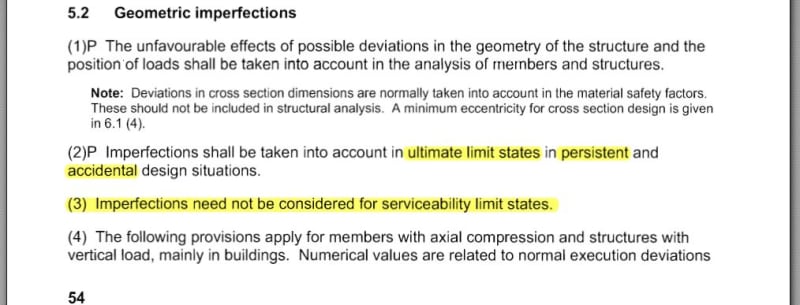hetgen
Structural
- May 3, 2010
- 221
Is it too conservative to consider notional loads (horizontal forces added to the structure to account for the effects of global geometric imperfections) when checking foundation allowable bearing stress? The global imperfections are not transient load they are there permanently.
But we normally apply a factor of safety of 3 against the ultimate bearing capacity to arrive at the allowable bearing capacity, will that safety factor somehow account for it?
Many thanks.
But we normally apply a factor of safety of 3 against the ultimate bearing capacity to arrive at the allowable bearing capacity, will that safety factor somehow account for it?
Many thanks.

